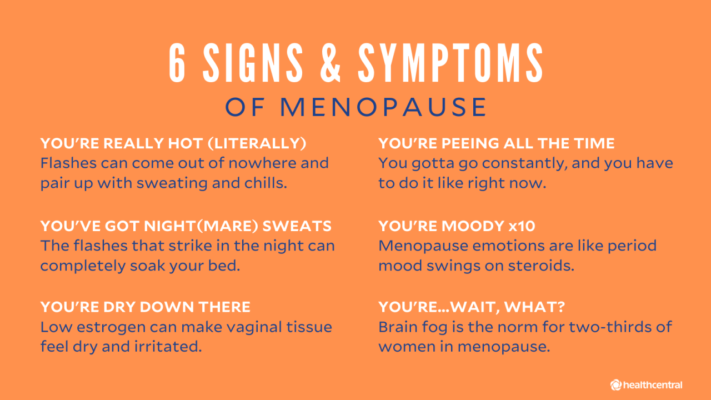Uncategorized
Introduction to Menopause:
Hello and welcome, everyone! I’m [Your Name], and I’m thrilled to be your guide on this transformative journey through our Menopause Weight Loss Mastery Program. Today, we’re diving into Session 1, where we’ll explore the fundamental aspects of menopause.
Menopause is a natural phase in a woman’s life, marking the end of her reproductive years. It’s a unique and sometimes challenging journey, but with knowledge and understanding, we can navigate it with grace and empowerment.
Let’s start by gaining a clear understanding of what menopause is. Menopause is not a single event but a series of stages that unfold over time. It’s important to recognize and appreciate these stages to know what to expect during this significant life transition.
What Causes Menopause?
Every woman is born with a finite number of eggs. As we age, the ovaries begin to slow in releasing functioning eggs—until they stop when we have no functioning eggs left. At the same time, the ovaries begin to produce less and less of the reproductive hormones progesterone and estrogen——the first triggers the lining of the womb to grow so it can house a fertilized egg, while the second helps with that but also keeps the growth of that lining in check so it doesn’t get too thick, leaving adequate room for the egg to grow. (When the egg isn’t fertilized, the lining sheds, and you get your period.)
Here’s a simple step-by-step:
-
The eggs in your ovaries are surrounded by cells that make up what’s known as the follicle.
-
As the egg matures, the follicle cells multiply, and the follicle begins to secrete estrogen.
-
Once the egg is released from the ovary, the empty follicle, left behind, then also begins to put out progesterone and estrogen—the hormones that help your body prepare for that just-released egg to be fertilized and settle in for the long haul.
-
But remember, you have a set number of eggs—so eventually, the number of functional eggs decline and you eventually just run out. When there are no more eggs or follicles, your ovaries stop—or at least drastically reduce—their production of the two reproductive hormones
-
At that point, your periods usually become less frequent and often lighter, though for some women they do the opposite and become heavier, longer, and closer together; both types of period changes are normal before menopause. When you no longer menstruate at all—because there are no eggs to release—the process is complete: You’re in menopause.
When Will I Go Through Menopause?
There is a wide range of ages at which women hit menopause, though on average, the magic year is 51.
That doesn’t mean symptoms wait till then, however. You may be in pre-menopause, also called perimenopause, as early as your mid-30s to late 40s. The typical length you’d be in perimenopause is four years, but it can last as long as 10 years (!) or be as short as a few months. To be clear, perimenopause is not the actual beginning of menopause; it’s the period of time that occurs before the big M.
During perimenopause, shifts in hormones may cause a wide array of symptoms. Period changes—whether they are further apart or closer together, longer or shorter, heavier or lighter—are the first indicator that you have entered Perimenopause Land (welcome!). Other physical and psychological changes can include trouble sleeping, mood swings, weight gain, or a lack of interest in sex. Sometimes, especially if you experience these symptoms on the earlier side—say, in your 30s—you might mistake them for a reaction to stress or simply to the bombardment of a busy life, as opposed to the result of hormonal shifts.
There are also two conditions known as early menopause, menopause before age 45, and premature menopause, which occurs before 40. These are uncommon phenomena without contributing factors. In fact, fewer than 5% of women go through early or premature menopause without having other health conditions.
Most often, early or premature menopause happens because a woman has had a hysterectomy with removal of the ovaries, whether because of ovarian or cervical cancer, fibroids, or some other reason. Chemotherapy (with or without surgery) can also damage your ovaries and trigger early menopause. One other potential predictor of early menopause: if one or more of your female relatives experienced it.
Any of the below symptoms can signal that you’re starting perimenopause, and they usually accelerate as you get closer to actual menopause; once you hit menopause, these symptoms can continue for months or even years afterward (the average: four to five years).
You probably won’t have all these symptoms, but every woman’s experience is unique. Intermittent symptoms, like hot flashes, might go away as your body adjusts to the lack of estrogen in your body—in fact, some women who take hormone therapy (more on that in a minute) find that when they stop, that’s when they get hot flashes. Other symptoms, like vaginal dryness, might just become a fact of post-menopausal life.

Menopause can present its challenges, both physically and emotionally. However, by addressing these challenges head-on, we can pave the way for a healthier and more fulfilling life. This understanding forms the foundation of our journey together.
That concludes our first session! I encourage you to share your thoughts, questions, or personal experiences in the course community. Let’s build a supportive space where we can learn from each other.
In our next session, we’ll delve into the fascinating world of hormonal changes during menopause. Get ready to uncover the connections between hormones and weight. Until then, stay curious and embrace the knowledge that will empower you on this journey!
Thank you for joining me today. I’ll see you in the next session!
